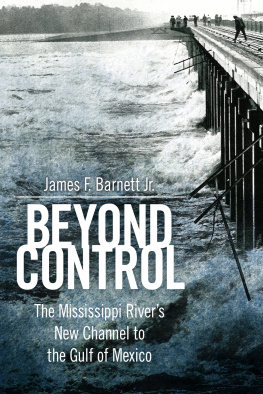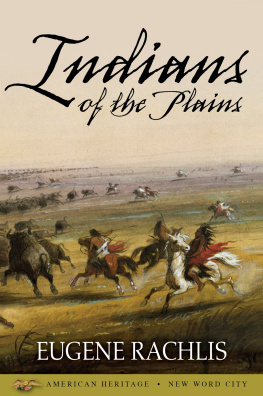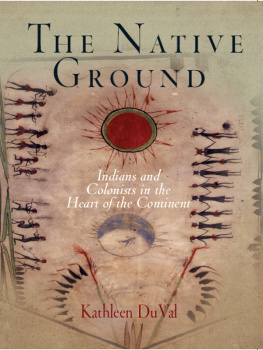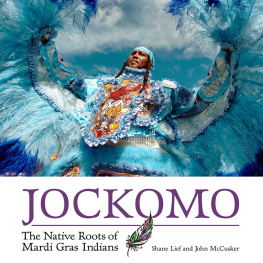MISSISSIPPIS AMERICAN INDIANS
Heritage of Mississippi Series/VOLUME VI
BOARD OF EDITORS
William F. Winter, chair
John F. Marszalek, vice-chair
Dernoral Davis
Elbert R. Hilliard
H. T. Holmes
Peggy W. Jeanes
William K. scarborough
Charles Reagan Wilson
Christine D. Wilson
MISSISSIPPIS AMERICAN INDIANS
James F. Barnett Jr.
Publication of this book was made possible through a grant from
the Phil Hardin Foundation.
www.upress.state.ms.us
The University Press of Mississippi is a member of the Association
of American University Presses.
Copyright 2012 by the Mississippi Historical Society
All rights reserved
Manufactured in the United States of America
First printing 2012
Library of Congress Cataloging-in-Publication Data
Barnett, James F., 1950
Mississippis American indians / James F. Barnett Jr.
p. cm. (Heritage of Mississippi series volume vi)
Includes bibliographical references and index.
ISBN 978-1-61703-245-5 (cloth : alk. paper)
ISBN 978-1-61703-246-2 (ebook)
1. Indians of North AmericaMississippiHistory. 2. Indians of
North AmericaMississippiGovernment relations. 3. Indians of
North AmericaMississippiSocial life and customs. I. Title.
E78.M73B37 2012
976.200497dc23 2011041573
British Library Cataloging-in-Publication Data available
For Sharon
CONTENTS
ACKNOWLEDGMENTS
Without the help of many people, this project would not have been possible. I am indebted to James R. Atkinson, Sharon W. Barnett, Samuel O. Brookes, John M. Connaway, Jack D. Elliott Jr., Patricia K. Galloway, and Elbert R. Hilliard, who read and commented on portions of the manuscript as it developed. Robbie Ethridge, Evan Peacock, and Brantly Willis served as readers for the University Press of Mississippi and provided essential critical reviews. Ethridge also graciously sent me the page proofs of her new work, From Chicaza to Chickasaw, and suggested a reorganization of my manuscript that was most helpful. For various forms of assistance, I am also grateful to David Abbott, Rebecca M. Anderson, Clinton I. Bagley, Charles R. Barnett, Ian W. Brown, Lara R. Brown, H. Clark Burkett, Earl Cotten, Jessica Fleming Crawford, Joseph V. Smokye Frank, Chris Goodwin, Hiram F. Pete Gregory, Hank Holmes, Grady Howell, Jay K. Johnson, Rachel Lynn Jolley, Avis King, George E. Lankford, Sarah J. Laramore, Mary Lohrenz, Kay McNeil, Kathy Moody, David W. Morgan, Stanley Nelson, Sharon R. Ogden, Carol Barnett Robertson, Janice B. Sago, Gordon Sayre, Stephanie Scott, Jean S. Simonton, Vincas P. Steponaitis, Anne Webster, and Christine Wilson. In addition, thanks are due to Nancy McLemore, Beth Richard, and Paul Smith of the Willie Mae Dunn Library, Natchez Branch, Copiah-Lincoln Community College, for assistance with interlibrary loans. Details are tiresome but critical, and I appreciate Robert Burchfields thorough copyediting work. Finally, I want to thank the Heritage Series editors and Craig Gill and the staff at the University Press of Mississippi.
MISSISSIPPIS AMERICAN INDIANS
INTRODUCTION
When I began work on this Heritage of Mississippi Series volume, I was completing a book about the history of the Natchez Indians (The Natchez Indians: A History to 1735). In my Natchez study, I made use of recent reevaluations of Natchez political structure suggested by anthropologists Marvin T. Smith and Karl G. Lorenz, which depict the Natchez as a confederation of three, and possibly four, different ethnic groups. It seemed that the confederacy model better explained the documented interaction between the Natchez and other tribes and Europeans. In the early history of the American Southeast, one does not have to look far to find impetus for the formation of tribal confederacies; the coming of Europeans to the continent set chaotic and terrible forces in motion that gave confederacies of small native groups a better chance at survival.
The formation of confederacies implies instability and dynamic interaction among societies, a scenario that aptly describes the rapidly shifting world in which all of the Mississippi tribes found themselves by the late seventeenth century. Of course, the recognition of confederacies in this area is nothing newethnohistorian Patricia Galloway has described the seventeenth-century formation of the formidable Choctaw confederacy. Likewise, smaller confederacies coalesced on the upper and lower Yazoo River and along the lower Tombigbee and Alabama rivers at about that same time. Many of the groups joining forces were immigrants into the Mississippi region. The Natchez and Yazoo coalitions included refugee groups from collapsed Mississippi period chiefdoms to the north in the Middle Mississippi Valley, while similar refugee groups from disintegrating chiefdoms in present-day eastern Mississippi and western Alabama formed the Choctaw confederacy and the grouping of small tribes north of Mobile Bay. Behind the urgency to unite for mutual protection was the pan-southeastern Indian slave trade initiated by the English in Carolina. At the same time, European diseases spreading among the tribes reduced their numbers, providing additional motivation for banding together.
The sources of information about Mississippis American Indians include archaeological reports, historical documentation, maps, and, to some extent, ethnographic data collected in the late nineteenth and early twentieth centuries. Sadly, only in rare instances are the words of the Indians themselves preserved. The vagaries of preservation limit what can be recovered through archaeology, and the native societies of interest here were quite different from those extant when trained ethnographers arrived on the scene. On the other hand, the colonial and early U.S. narratives are potentially much more informative. These writings provide a window upon a bygone world and its inhabitants; however, the narratives should be used with caution. With few exceptions, this information comes from individuals whose interests lay in controlling the native people for military purposes, Christian indoctrination, profit, and political gain. European observers interpreted what they saw in the context of their own experiences, prejudices, and religious beliefs, which generally consigned the American Indians to a lower level of humanity and tagged them with the appellation savages. The narratives also come at a high costthe native societies we encounter in the letters, journals, and military reports were dwindling rapidly because of the presence of the Europeans observing them. The dynamics of European encroachment generated desperate migrations and dangerous alliances with agents representing French, English, and Spanish interests. The regions ethnic landscape grew even more unpredictable with the introduction of Africans into the Louisiana colony during the early eighteenth century. It follows that the tribal groups discussed here were quite different from whatever they might have been before Columbus sailed. Instead of pristine forest societies, the writers who generated the narratives observed traumatized social groups attempting to adapt to the changing world. As we will see, those Mississippi tribes that survived into the nineteenth century did so by reinventing themselves.






